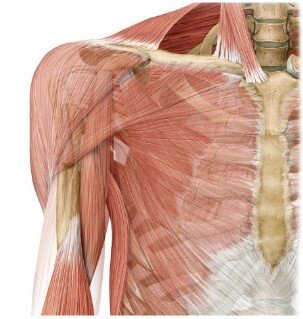Spotlight: Karl Wesker
When I took Human Gross Anatomy I used a total of eight textbooks, flashcards, and anatomy resources on the internet to help drill all of the information into my head. But, the one book that I relied on and learned the most from was the Thieme (pronounced Tee-Ma) Atlas of Anatomy. The illustrations in this text are incredibly clear and crisp, unlike any other anatomy text I used. And the illustrations were accompanied by only the most pertinent details necessary to explain the anatomy.
Karl Wesker
This leads me into the Spotlight illustrator for this week, Karl Wesker. Based in Berlin, Germany, he created the majority of the 3,000 illustrations in the Thieme Atlas. He was trained as a printer and graphic designer, but was interested in painting and art and in learning as much as possible about anatomy. He has been illustrating for fine art and scientific publishing for over 10 years now.It took a total of 8 years to complete the entire Thieme Atlas consisting of three textbooks and over 3,000 illustrations. The timeline for the project was estimated at a maximum of 4 years! But even after 8 years he is still fascinated by the human body.
Karl states that it is relatively simple to draw a dissection superficially without understanding what you are drawing. Any artist can copy form. This requires no deeper understanding of anatomy. For the Atlas of Anatomy, however, he needed to create illustrations that could be layered from outside to inside. This called for a complete understanding of gross anatomy and how structures relate to each other. Therefore, it was essential for him to go into the anatomy lab to take photos and sketch directly from cadavers.
Karl uses Adobe Photoshop, Macromedia Freehand, and a Wacom tablet to produce all of his illustrations. This allows him to create incredible detail and the layering effect seen in these illustrations.
Thank you Karl for allowing me to understand anatomy through your illustrations! Read the entire interview with Karl at Thieme. Note: the interview is in German.




